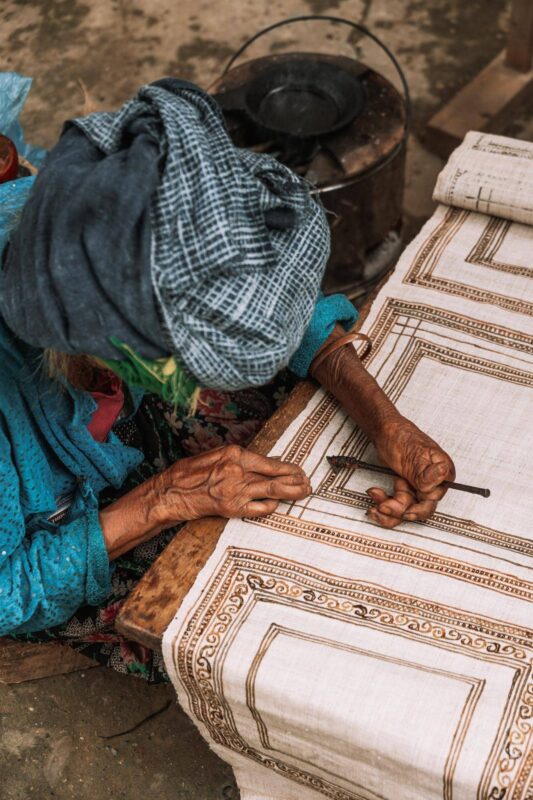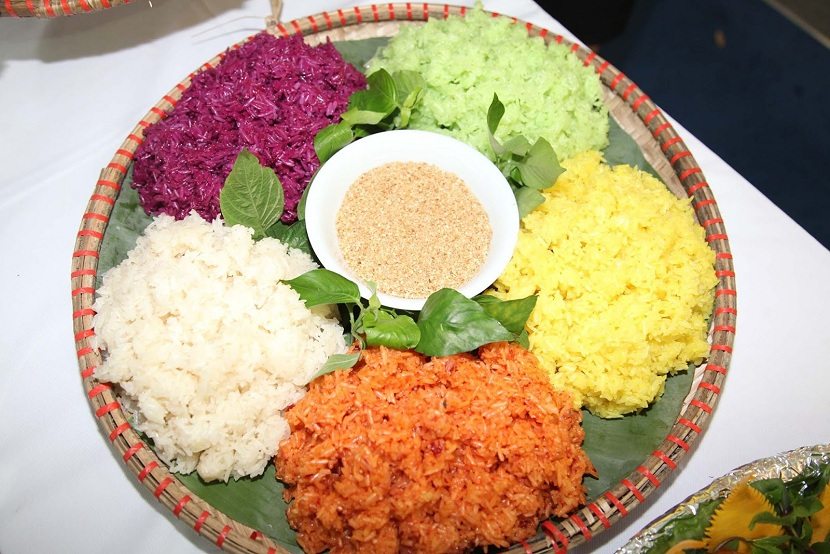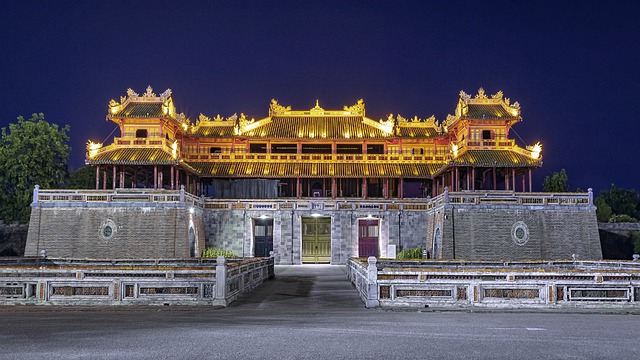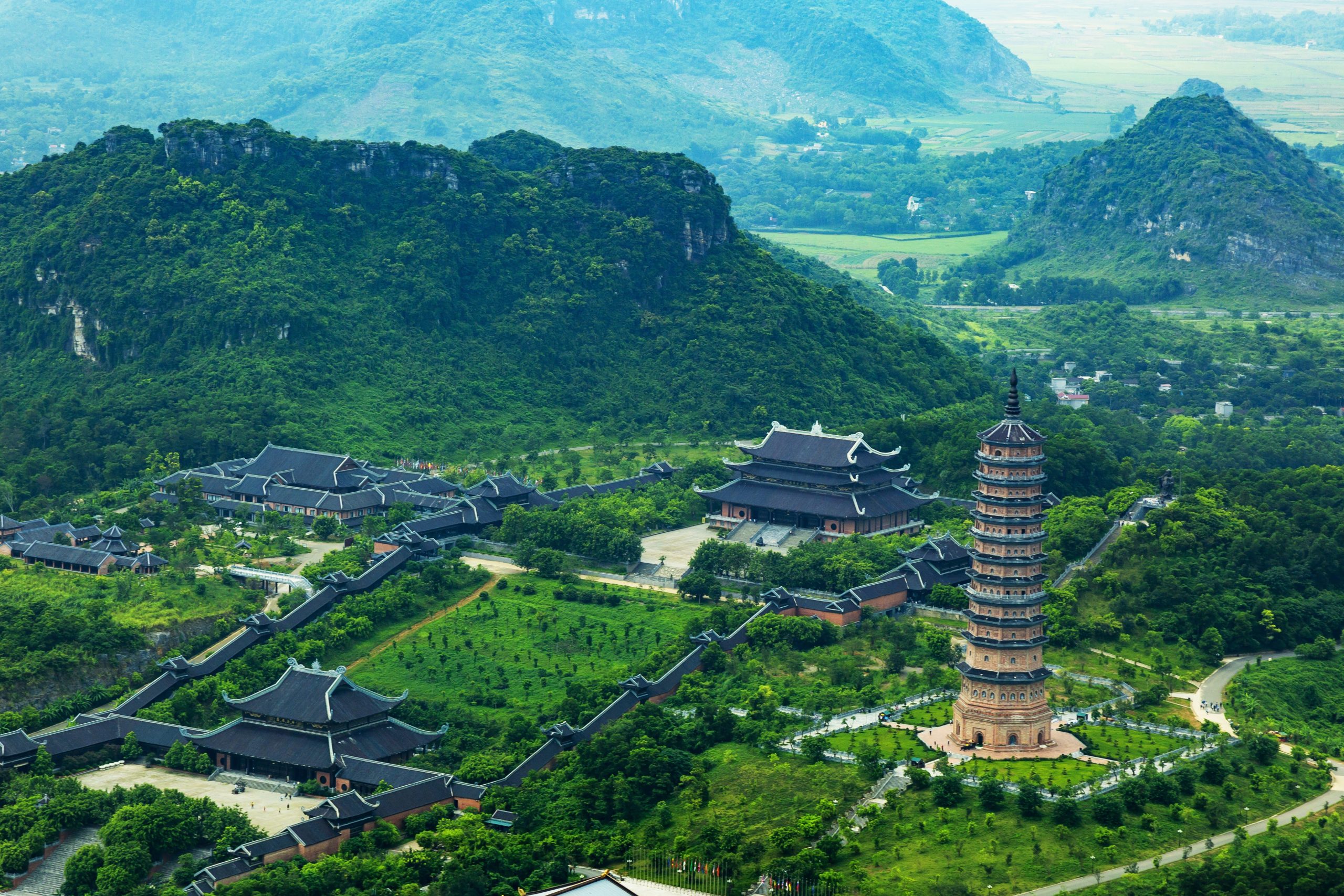Blogs, Travel Tips
Explore the Ha Giang | Best 4-Day Itinerary and Tips
Explore The Ha Giang
If you’re seeking an unforgettable adventure, the Ha Giang Loop is one of the most thrilling things to do in Vietnam. This four-day road trip allows you to discover the most beautiful places in Northern Vietnam. You can choose to ride on the back of a motorbike with an “easy rider,” drive the motorbike yourself or take the route by car with a driver. The winding mountain roads will lead you past enormous limestone rock formations, lush rice terraces, and panoramic viewpoints. Along the way, you’ll visit authentic villages and immerse yourself in the different cultures of the region. This unique experience will stay with you for a lifetime and is sure to be a highlight of your trip. Below, I’ll share my itinerary for exploring the Ha Giang Loop and provide some practical tips.
The Ha Giang Loop in Brief
The Ha Giang Loop is approximately 350 kilometers (217 miles) long and is one of the most famous motorbike routes in Southeast Asia. This route takes you through the stunning province of Ha Giang, where around 700,000 inhabitants from various ethnic minority groups reside. While Ha Giang used to be a destination mainly for travelers looking for off-the-beaten-path experiences, it has gained popularity in recent years. Despite the increasing number of visitors, the province has maintained its authentic charm, offering the opportunity to interact with diverse and hospitable local people.
 |
 |
Driving the Ha Giang Loop Yourself, Riding as a Passenger, or Using a Car?
The mountain roads in Ha Giang are generally well-maintained, but some can be challenging, especially in bad weather. When considering the Ha Giang Loop, think carefully about whether you want to drive it yourself, ride as a passenger with an easy rider, or choose a car with a driver. An easy rider is a guide and driver who takes you as a passenger on their motorbike. They ride in groups of various sizes. If you have enough experience and an international motorcycle license, you can also choose to drive the challenging route yourself. Whether with or without an easy rider, you can take a group tour, which makes the trip more enjoyable. With a tour, everything is arranged for you, including your guide, accommodation, meals, transportation, and entrance fees, all included in the price. The most popular Ha Giang Loop tour lasts four days, but if you have less time, you can opt for the three-day tour. There are even two-day and five-day variants, but these are less common. The four-day tour allows you to see the most beautiful places, and I found this duration to be just right.
 |
 |
Driving the Ha Giang Loop without a Tour
You can also choose to drive the Ha Giang Loop without a tour. There are both advantages and disadvantages to doing the Ha Giang Loop on your own. I’ve listed them below for you. In our opinion, taking a tour with or without an easy rider is the best option because it allows you to enjoy the Ha Giang Loop in a very relaxed manner.
Advantages of doing the Ha Giang Loop without a tour:
- It offers a lot of freedom.
- It provides an adventurous feeling.
- You can set your own pace.
- It can be more budget-friendly.
Disadvantages of doing the Ha Giang Loop without a tour:
- You need to figure out what to do with your luggage.
- You have to rent a motorbike and arrange insurance on your own.
- You need to apply for a permit from the Ha Giang immigration office to stay in certain parts of the province.
- The route is not pre-planned, and you have to arrange your own accommodations.
- Locals speak little to no English, making communication a significant challenge without a guide.
Ha Giang Loop with a Car and Driver
Nowadays, it’s also possible to do the Ha Giang Loop with a car and driver. This is ideal for families who want to explore this beautiful region but don’t want to ride on a motorbike. The route may sometimes be slightly different because the car cannot access the small mountain paths, but you’ll still see the same beautiful places and plenty of winding mountain passes.
Ha Giang Loop Riding with an Easyrider
An easy rider is a Vietnamese-English-speaking guide who can provide information about Vietnam and help connect you with the locals. Since this region has not been frequently visited by travelers, few people here speak English. Riding with an easyrider was an amazing experience for me. The entire route, including stops, meals, and accommodations, was well taken care of. One great advantage of riding on the back of a motorbike is that you don’t need to put in any effort to drive yourself, allowing you to fully enjoy everything you see along the way. Even if you have a motorcycle license, choosing an easyrider can still be a great option. It makes the Ha Giang Loop relaxed and enjoyable, allowing you to simply soak in the experience.
 |
 |
Day-by-Day Description of the Tour
The Ha Giang Loop can be completed in three, four, or five days. I chose to do the Ha Giang Loop in four days, which is the most common choice among travelers. This allows for sufficient breaks to stretch your legs and avoids riding too many miles on the motorbike. It was just right! Below, I’ll share the day-to-day itinerary. Please note that this can vary slightly depending on the tour operator and various factors such as weather conditions.
Day 1: Conquer the Happiness Road and Discover Quan Ba
Start your Ha Giang Loop adventure by conquering the legendary Happiness Road. Wind through breathtaking mountain scenery as you journey to Co Thien Mountain and embark on a hike to the iconic Heaven’s Gate. Immerse yourself in the local culture by exploring the charming Quan Ba Village, home to the Hmong people. Don’t miss the opportunity to visit the mysterious Lung Khuy Cave.
Highlights: Happiness Road, Co Thien Mountain, Heaven’s Gate, Quan Ba Village, Lung Khuy Cave
Distance: Approximately 65 kilometers
 |
 |
Tip: It’s highly appreciated if you buy some food or drinks in the local villages or, for example, a small souvenir.
Day 2: Explore Hmong Culture and Conquer the Lung Cu Flag Tower
Discover the rich tapestry of Hmong culture in Lung Tam Village, where you can witness the traditional hemp linen-making process. Continue your journey to the historic Meo King Palace before reaching the northernmost point of Vietnam at the Lung Cu Flag Tower. Enjoy panoramic views and soak in the atmosphere of the charming town of Dong Van.
Highlights: Lung Tam Village, Meo King Palace, Lung Cu Flag Tower, Dong Van
Distance: Approximately 130 kilometers
Tip: If you want to relax a bit after two days on the motorbike, consider booking a massage in Dong Vang.
Day 3: Conquer the Majestic Ma Pi Leng Pass
Experience the thrill of conquering the infamous Ma Pi Leng Pass, often dubbed the “King of Passes.” Along the way, marvel at the stunning Tu San Canyon and take a relaxing boat ride on the serene Nho Que River. End your day in the picturesque Du Gia Village.
Highlights: Ma Pi Leng Pass, Tu San Canyon, Nho Que River, Du Gia Village
Distance: Approximately 120 kilometers
Tip: If you happen to be in Dong Van on a Sunday, you can visit the local market there.
Day 4: Hike to Du Gia Waterfall and Return to Ha Giang City
Start your day with a refreshing hike to the Du Gia Waterfall before embarking on your final journey through the stunning Minh Ngoc Pass. Savor the last moments of your Ha Giang Loop adventure with beautiful landscapes and delicious local cuisine.
Highlights: Du Gia Waterfall, Minh Ngoc Pass
Distance: Approximately 80 kilometers
Where Do You Stay During the Ha Giang Loop?
During this tour, you’ll sometimes stay in a guesthouse and sometimes in a hotel. The nights in a guesthouse are particularly special in my opinion. You sleep and eat with a local family in a traditional village, fully immersing yourself in Vietnamese culture. Usually, you’ll stay in a hotel in the town of Dong Vang. I found the variety to be quite nice because in the larger city, you also have the opportunity to dine at a restaurant, play pool together, or visit a karaoke bar.
 |
 |
Tip: Bring earplugs for a good night’s sleep. Guesthouses often have wooden walls and can be noisy.
Food and Drinks During the Tour
The Ha Giang Loop tour takes care of everything, including plenty of stops for food and drinks. The day often starts early with breakfast together. You can usually choose from toast with eggs or pancakes with bananas. Of course, Vietnamese noodles are also available for those who want to immerse themselves more in Vietnamese culture. Lunch is often very extensive. The table is filled with bowls of rice, cooked vegetables, chicken, pork, fried eggs, and spring rolls. You won’t go hungry during the Ha Giang Loop!
 |
 |
Essential Packing List for Your Ha Giang Loop Adventure
Pack smart for your Ha Giang Loop adventure! To make the most of your trip, focus on these essential items:
Clothing
- Versatile layers: Pack clothing suitable for various weather conditions, including warm layers for chilly mornings and evenings.
- Sturdy footwear: Hiking boots are essential for exploring the rugged terrain.
- Waterproof jacket: Protect yourself from unexpected rain showers.
Gear
- Daypack: A compact backpack is perfect for carrying essentials during day trips.
- Camera and accessories: Capture stunning memories with your camera and essential accessories.
- Power bank: Keep your devices charged on the go.
- Sunscreen and insect repellent: Protect your skin from the sun and pesky bugs.
Toiletries and Essentials
- Travel-sized toiletries: Pack essentials like shampoo, conditioner, and toothpaste in travel-sized containers.
- Medications: Bring any necessary medications.
- Microfiber towel: A quick-drying towel is ideal for space-saving.
Remember to pack light! Many guesthouses and hotels offer laundry services.
The Best Time to Ride the Ha Giang Loop
The Ha Giang Loop can be ridden all year round, but the best time to travel is from November to March as this is the dry season for the region. There is less rainfall during this period, but it can be a bit colder. From April to May, there is more rain, but the landscape is incredibly colorful as everything is in bloom. In the months of June to September, there is the most rainfall, but you’ll get to see beautiful green rice fields in return. From September to October, the weather is usually pleasant with comfortable temperatures and lower humidity than in the summer.
As you can see, each season has its advantages and disadvantages, so the best time to ride the Ha Giang Loop depends on your personal preferences. I rode the Ha Giang Loop in August myself. We had occasional heavy showers along the way, but everything was beautifully green, and with good rain gear, it was still a fantastic road trip even in the rainy season.
Tip: Pack plenty of layers that you can easily put on and take off. Temperatures can change quickly in the mountains.
How to Travel to Ha Giang?
The starting point for the Ha Giang Loop is the city of Ha Giang itself. Most people travel there from Sapa, Hanoi, or Cao Bang.
From Sapa, there are several daily buses to Ha Giang. The total bus journey takes about six hours, and you can pre-book bus tickets online. Please note that this is a travel article, and the information provided here is based on the author’s experiences and research up to the knowledge cutoff date in January 2022. Travel conditions and regulations may have changed since then, so it’s essential to verify the latest travel information and requirements before planning your trip.
From Hanoi, there are dozens of daily buses departing for Ha Giang. The bus journey takes about 6 hours, and you can travel during the day or at night. Check out all departure times and reserve your bus ticket in advance.
Traveling from Cao Bang to Ha Giang will allow you to experience some of the most stunning mountain landscapes in Vietnam, including Dong Van Karst Plateau Geopark and Ma Pi Leng Pass. Additionally, you can immerse yourself in the unique cultures of ethnic minority groups living in the region. Finally, Ha Giang offers an authentic and off-the-beaten-track travel experience that is perfect for adventurous travelers looking to explore Vietnam beyond the popular tourist destinations.
Costs for the Ha Giang Loop
The prices of tours vary greatly and depend on the quality and what is included or not included in the tour. For a good tour, you should expect to pay around $270 to $300. Most of these tours include guides and/or easyriders, meals, snacks, entrance fees to attractions, rain gear, and accommodations. During the tour, you’ll only incur additional expenses if you decide to buy souvenirs along the way, and of course, it’s a good practice to tip the guides and/or easyriders after the tour. They will greatly appreciate it!
TravelRebels. (n.d.). Retrieved from














